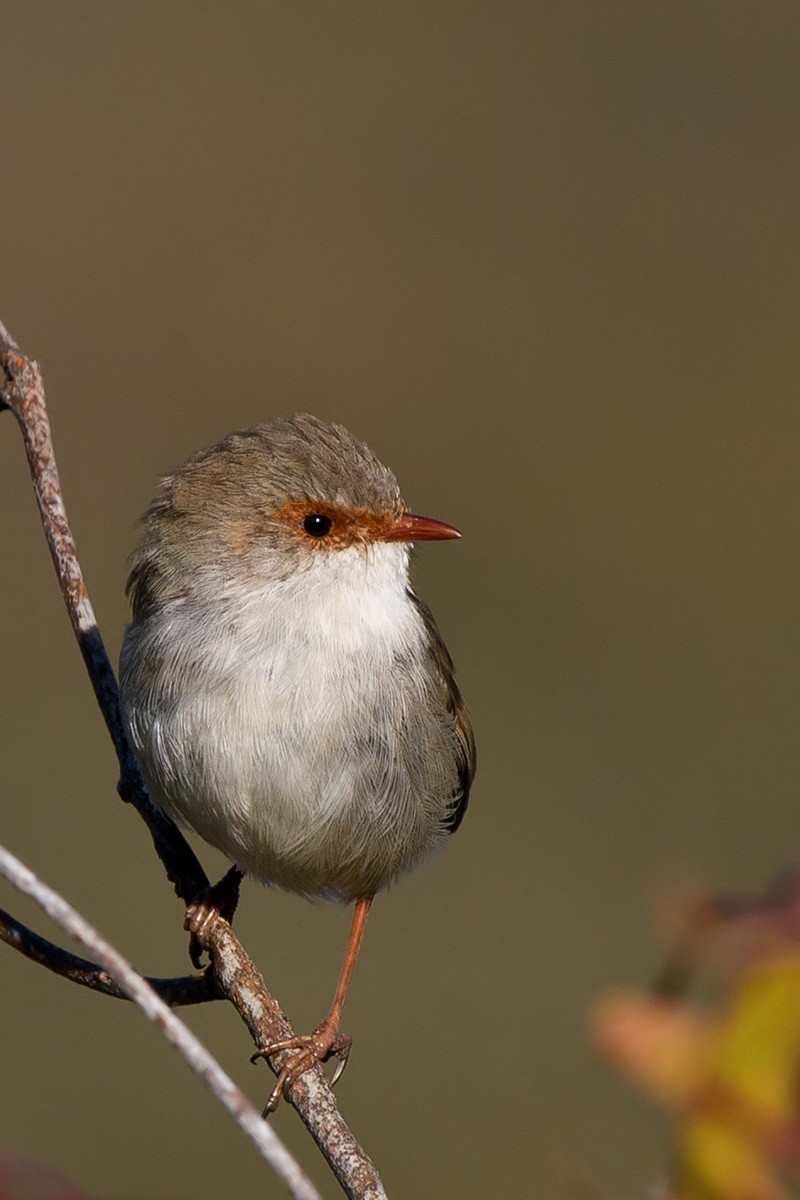Superb Fairywren
A species of Fairywrens Scientific name : Malurus cyaneus Genus : Fairywrens
Superb Fairywren, A species of Fairywrens
Botanical name: Malurus cyaneus
Genus: Fairywrens
Content
Description People often ask General Info
Description
The superb fairywren is 14 cm (5 ⁄2 in) long and weighs 8–13 g (0.28–0.46 oz), with males on average slightly larger than females. The average tail length is 5.9 cm (2 ⁄3 in), among the shortest in the genus. Averaging 9 mm (0.4 in) in subspecies cyaneus and 8 mm (0.3 in) in subspecies cyanochlamys, the bill is relatively long, narrow and pointed and wider at the base. Wider than it is deep, the bill is similar in shape to those of other birds that feed by probing for or picking insects off their environs. Like other fairywrens, the superb fairywren is notable for its marked sexual dimorphism, males adopting a highly visible breeding plumage of brilliant iridescent blue contrasting with black and grey-brown. The brightly coloured crown and ear tufts are prominently featured in breeding displays. The breeding male has a bright-blue forehead, ear coverts, mantle and tail, brown wings, and black throat, eye band, breast and bill. Females, immatures, and non-breeding males are a plain fawn colour with a lighter underbelly and a fawn (females and immatures) or dull greyish blue (males) tail. The bill is brown in females and juveniles and black in males after their first winter. Immature males moult into breeding plumage the first breeding season after hatching, though incomplete moulting sometimes leaves residual brownish plumage that takes another year or two to perfect. Both sexes moult in autumn after breeding, with males assuming an eclipse non-breeding plumage. They moult again into nuptial plumage in winter or spring. Breeding males' blue plumage, particularly the ear-coverts, is highly iridescent because of the flattened and twisted surface of the barbules. The blue plumage also reflects ultraviolet light strongly, and so may be even more prominent to other fairywrens, whose colour vision extends into this part of the spectrum. 
Size
14 - 16 cm
Colors
Brown
Black
Gray
Blue
Life Expectancy
5-6 years
Nest Placement
Shrub
Feeding Habits
Superb Fairywren primarily consume insects like ants and grasshoppers, supplementing with seeds and fruit. Engaging in 'hop-searching', they forage near cover in groups. Ants become a key food source during winter. Nestlings are fed larger prey, including caterpillars.
Habitat
The superb Fairywren thrives in wooded areas with dense undergrowth and embraces urban environments, including gardens and parks where native plants provide adequate cover. Originally adapted to open eucalypt forests, the superb Fairywren has since exploited a variety of vegetation types, from exotic shrubs to suburban green spaces, across regions receiving over 400 mm of annual rainfall. This species demonstrates a versatile habitat range that even encompasses broader ecological niches on islands compared to their mainland counterparts.
Dite type
Insectivorous
People often ask
General Info
Feeding Habits
Bird food type
Bird Feeder Type

Ground

Platform
Behavior
Like all fairywrens, the superb fairywren is an active and restless feeder, particularly on open ground near shelter, but also through the lower foliage. Movement is a series of jaunty hops and bounces, with its balance assisted by a proportionally large tail, which is usually held upright, and rarely still. Food is harder to find during winter and they are required to spend the day foraging continuously. 
Distribution Area
The superb fairywren is common throughout most of the relatively wet and fertile south-eastern corner of the continent, from the south-east of South Australia (including Kangaroo Island and Adelaide) and the tip of the Eyre Peninsula, through all of Victoria, Tasmania, coastal and sub-coastal New South Wales and Queensland, through the Brisbane area and extending inland – north to the Dawson River and west to Blackall; it is a common bird in the suburbs of Sydney, Melbourne and Canberra. It is found in wooded areas, generally with plenty of undergrowth, and has also adapted to urban existence and can be found in gardens and urban parks as long as there is an undergrowth of native plants nearby. Lantana (Lantana camara), a prolific weed in Australia, has also been beneficial in providing shelter in disturbed areas, as has the introduced and invasive blackberry Unlike other fairywrens, it appears to benefit from the urban environment and has out-competed the introduced house sparrow in one study on the grounds of the Australian National University in Canberra. Colonies of wrens can be found in Hyde Park and the Royal Botanic Gardens in Sydney's urbanized centre. It is not found in dense forest nor in alpine environments. Forestry plantations of pine and eucalypts are also unsuitable as they lack undergrowth. 
Scientific Classification
Phylum
Chordates Class
Birds Order
Perching birds Family
Australasian wrens Genus
Fairywrens Species
Superb Fairywren 